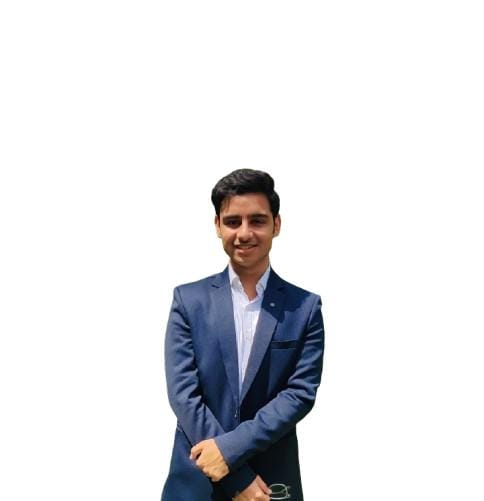INTRODUCTION
Justice Bhushan Ramkrishna Gavai took oath as the 52nd Chief Justice of India on 14 May 2025, succeeding CJI Sanjiv Khanna who retired on 13 May 2025. Justice BR Gavai became the first Buddhist to lead our nation’s judicial system. President Draupadi Murmu was present in the ceremony.
Those in attendance on Wednesday were Prime Minister Narendra Modi, Vice-President Jagdeep Dhankhar, Union Home Minister Amit Shah, Defence Minister Rajnath Singh, and External Affairs Minister S Jaishankar.
Justices Surya Kant, Bela Trivedi, P S Narasimha, and other Supreme Court justices were also present, along with former CJI Khanna.
This article will explore the concepts related to the position of CJI. It will dive into various factors which lead to the appointment as a CJI. It will help us to understand what is the role of CJIs in India. It will also study the constitutional provisions which are governing the concept of CJI.
HISTORY
On May 24, 2019, Justice B R Gavai was appointed to the Supreme Court. Since then, he has served on multiple Constitution benches that have issued significant decisions. He will hold office of CJI till November 23, 2025. Justice Gavai was promoted to additional judge of the Bombay High Court on November 14, 2003. He was born in Amravati, Maharashtra, on November 24, 1960. On November 12, 2005, he was appointed a permanent judge of the high court.
“In no way is his recommendation to be misconstrued to mean that three senior-most judges from Bombay High Court (two of whom are serving as Chief Justices) are less suitable than Justice Gavai,” the SC collegium stated in its recommendation elevating Justice Gavai to the Supreme Court. After roughly ten years, a judge from the Scheduled Caste shall be appointed to the Supreme Court bench.
Justice Gavai stated in an unofficial interview with reporters on Sunday that the Constitution is the ultimate law and that all government agencies must operate within its bounds. “All three branches of our democracy are expected to operate within the bounds of the constitution,” he stated.
CONSTITUTIONAL PROVISIONS
The highest ranking member of the Indian judiciary and top judge of the Supreme Court of India is the top Justice of India (CJI). According to Article 124(2) of the Constitution, the President of India has the authority to select the next Chief Justice based on the recommendation of the departing Chief Justice after consulting with other judges. This appointment will be in effect until the Chief Justice reaches the age of 65 or is removed through the constitutional process of impeachment.
APPOINTMENT
The Ministry of Law and Justice asks the current chief justice for a recommendation as the chief justice’s retirement draws near. There may also be discussions with other judges. The prime minister is then given the recommendation and will counsel the president on the appointment.
Conventionally, the next most senior Supreme Court judge is the one the existing chief justice recommends as a replacement. But twice, this custom has been violated. Three senior justices were replaced in 1973 by Justice A. N. Ray, and Justice Hans Raj Khanna were replaced in 1977 by Justice Mirza Hameedullah Beg, who was appointed Chief Justice.
REMOVAL
A Supreme Court judge may be removed under Article 124(4) of the Indian Constitution, which also applies to chief justices. The chief justice serves until the age of 65 after being appointed. The constitution makes no mention of a set tenure.
Only after an address by each House of Parliament, backed by a majority of the House’s total membership and by a majority of at least two-thirds of the House’s present and voting members, has been presented to the President in the same session for such a removal on the grounds of proven misconduct or incapacity, may a Supreme Court judge be removed from office.
ACTING PRESIDENT
According to the President (Discharge of Functions) Act, 1969, the top justice of India will preside over the country in the event that neither the president nor the vice president are available. Vice President V. V. Giri took over as president after President Zakir Hussain passed away while in office. Justice Mohammad Hidayatullah, the chief justice, later took over as India’s acting president after V. V. Giri resigned as vice president. According to the Supreme Court’s custom, the senior most judge serves as the acting chief justice. A month later, Justice Hidayatullah returned to his position as India’s top justice when the newly elected president assumed office.
REMUNERATION
According to the Indian Constitution, the Parliament of India has the authority to determine the chief justice’s compensation and other terms of service. As a result, the Supreme Court Judges (Salaries and Conditions of Service) Act of 1958 established these clauses.
IMPORTANCE AND CONCLUSION
The chief justice is in charge of assigning cases to constitutional benches that handle significant legal issues in his capacity as leader of the Supreme Court. According to the Supreme Court Rules of Procedure of 1966 and Article 145 of the Indian Constitution, the chief justice must assign work to the other judges, who are then required to return the case to them (for re-allocation) if they need it examined by a different panel of knowledgeable judges.
On the administrative side, the chief justice handles general and other topics pertaining to the oversight and operation of the Supreme Court, including maintaining the roster and appointing court staff.
ABOUT THE AUTHOR

SAHIL YADAV, a law student at NLIU Bhopal, is a dedicated and passionate legal writer, who is keen to explore International law, Constitutional Law, Criminal Law, Forensic Psychology and publish research papers and articles on contemporary legal nuances and issues. He is also interested in intersection of disciplines like history, psychology, political science, philosophy, and sociology with law.

